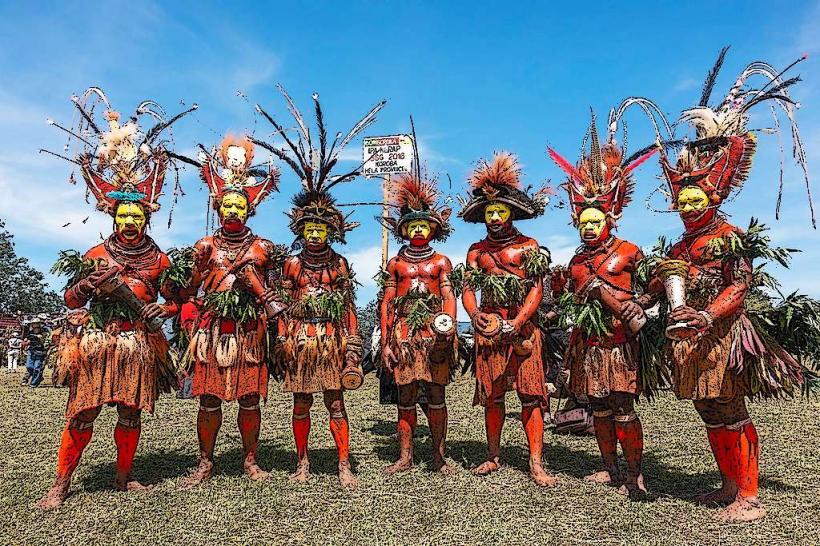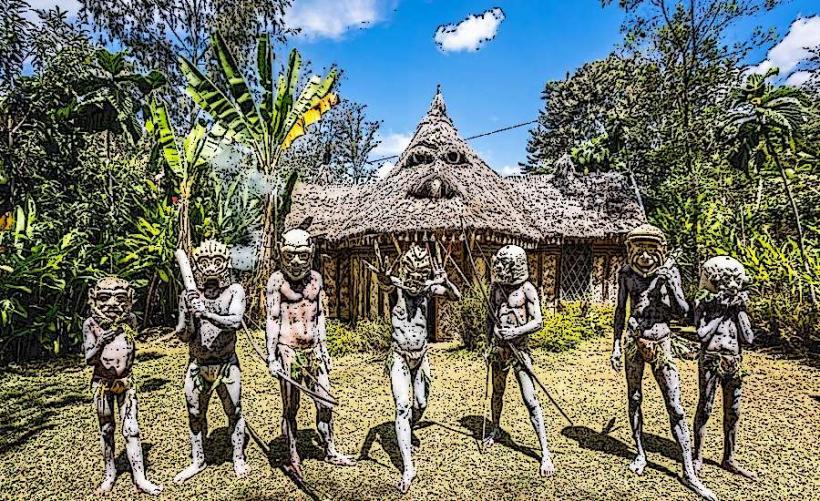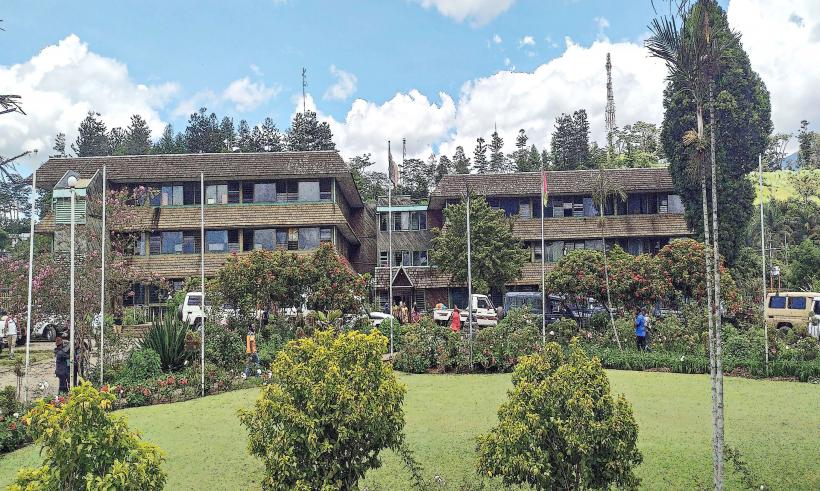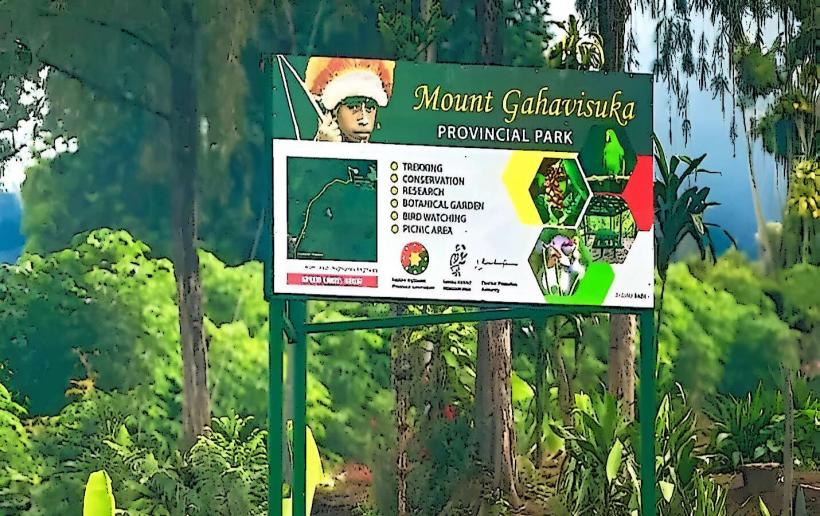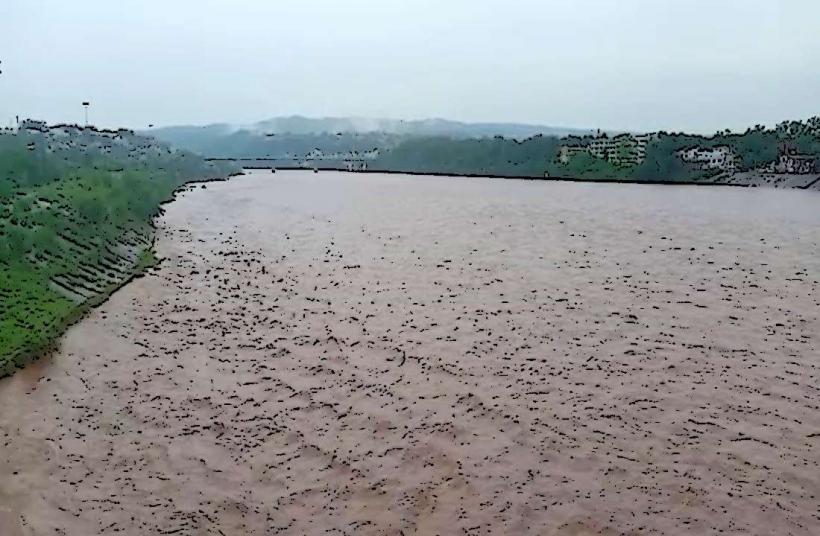Information
Landmark: Goroka MarketCity: Goroka
Country: Papua New Guinea
Continent: Australia
The Goroka Market is one of the most prominent and vibrant markets in Papua New Guinea, located in Goroka, the capital of the Eastern Highlands Province. The market serves as a central hub for the exchange of goods, cultural interactions, and a representation of the traditional and modern aspects of life in the Highlands region. It is a popular destination for locals and tourists alike, offering a wide array of products, traditional crafts, and a glimpse into the region's way of life.
Key Features of Goroka Market:
Location and Accessibility: The Goroka Market is centrally located in the town of Goroka, making it easily accessible to residents and visitors. Goroka itself is situated in a picturesque valley surrounded by lush mountains, offering a scenic backdrop to the market. The market is well-connected by road to other towns in the region and serves as an important commercial hub for the surrounding villages and towns.
Market Structure and Layout: The market is typically a bustling open-air space, where vendors set up stalls or display their goods on the ground. It is organized into various sections, with areas designated for different types of goods, including:
- Fresh produce: A large portion of the market is dedicated to local fruits, vegetables, and herbs, much of which is grown in the fertile highlands. These include sweet potatoes, taro, yams, bananas, avocados, and tomatoes, among other staples.
- Handicrafts: Goroka Market is known for the sale of traditional crafts, such as baskets, wood carvings, clothing, and bilums (woven bags). These handmade items often reflect the unique styles and traditions of the various indigenous communities in the region.
- Livestock: There is a section for the trade of chickens, pigs, and cattle, which are important assets for local families and play a key role in the economy and social life of the Highlands.
- Fish and meat: Fresh fish from nearby rivers and meat from local butchers are sold at the market as well. The variety depends on what is available from local farms and suppliers.
Cultural and Social Significance: The Goroka Market is not just a place for buying and selling goods—it is also an important cultural and social gathering point for the people of the Eastern Highlands. It is a place where locals meet, socialize, and exchange news. The market is a reflection of the diverse cultures and ethnic groups of the region, including the Huli, Goroka, Wahgi, and other highland tribes. This makes the market a great place to observe the traditional ways of life and the vibrant cultures of Papua New Guinea's Highlands.
Visitors can often see people wearing traditional attire or showcasing cultural practices, adding to the authentic experience of the market.
The Role of Women: Women are particularly prominent at the Goroka Market, with many serving as the primary vendors and sellers. They play a crucial role in the local economy by selling fresh produce, handmade crafts, and traditional food items. The market is a reflection of the matrilineal and patrilineal traditions in the region, where women often manage household resources and have a central role in food production and trade.
Traditional Foods: One of the key attractions of Goroka Market is its variety of traditional foods and ingredients unique to the Highlands region. Local dishes may include mumu (a type of traditional feast cooked in an underground oven), kaukau (sweet potatoes), and taro. Traditional spices, herbs, and cooking ingredients are also available, reflecting the local culinary traditions of the highland tribes.
Economic Importance: The Goroka Market is an essential part of the local economy. It serves as a marketplace for small-scale farmers, craftspeople, and livestock traders, allowing them to sell their goods and make a living. The market is not only important for subsistence farming but also for the cash economy of the region, providing a place where people can buy and sell goods that are essential to daily life.
Additionally, the market is a source of income for local vendors, many of whom depend on the sales of their products to support their families. The tourism industry also contributes to the market's economic significance, with visitors coming to buy unique handmade crafts and experience the local culture.
Tourist Experience: For tourists, the Goroka Market offers a rich cultural experience. It is one of the best places in Papua New Guinea to purchase authentic souvenirs, such as traditional bilums, carvings, and woven goods. Tourists can also engage with the local people, learn about the traditional customs of the region, and observe the bustling activities of the market.
Many visitors to Goroka, especially those attending the famous Goroka Show (a large cultural festival), often make the market a part of their visit. The market provides a chance to connect with the local communities, try local foods, and purchase unique handcrafted items.
Events and Festivals: During major events such as the Goroka Show, the market becomes even more lively. The Goroka Show, held annually in September, is one of the largest cultural festivals in Papua New Guinea, bringing together hundreds of tribes from the Highlands for performances, dances, and cultural exhibitions. The show’s vibrant celebrations spill over into the market, making it a bustling hotspot for both locals and visitors.
Challenges: Despite its central role in the region, the Goroka Market faces various challenges, including overcrowding, poor infrastructure, and health and sanitation issues. There are often concerns about waste management, and sometimes the market's facilities are inadequate for the high number of visitors. However, the market remains an essential part of daily life in Goroka, and efforts are being made to improve the conditions and infrastructure of the market.
Future Prospects: The Goroka Market is expected to continue growing in importance as both the population in the region increases and the tourism industry expands. There are ongoing efforts to modernize the market's facilities while preserving its unique cultural and social characteristics. Improved infrastructure, better waste management, and greater support for local vendors could enhance the market's sustainability and its ability to serve as a thriving center of commerce and culture.
Conclusion:
The Goroka Market is not just a market but a central part of the cultural and social fabric of the Eastern Highlands region of Papua New Guinea. It serves as a meeting place for local communities, a hub for economic activity, and an essential venue for cultural exchange. For visitors, the market provides a unique opportunity to experience the daily life, traditions, and customs of the Highlands people, making it an important stop for anyone exploring the region.

